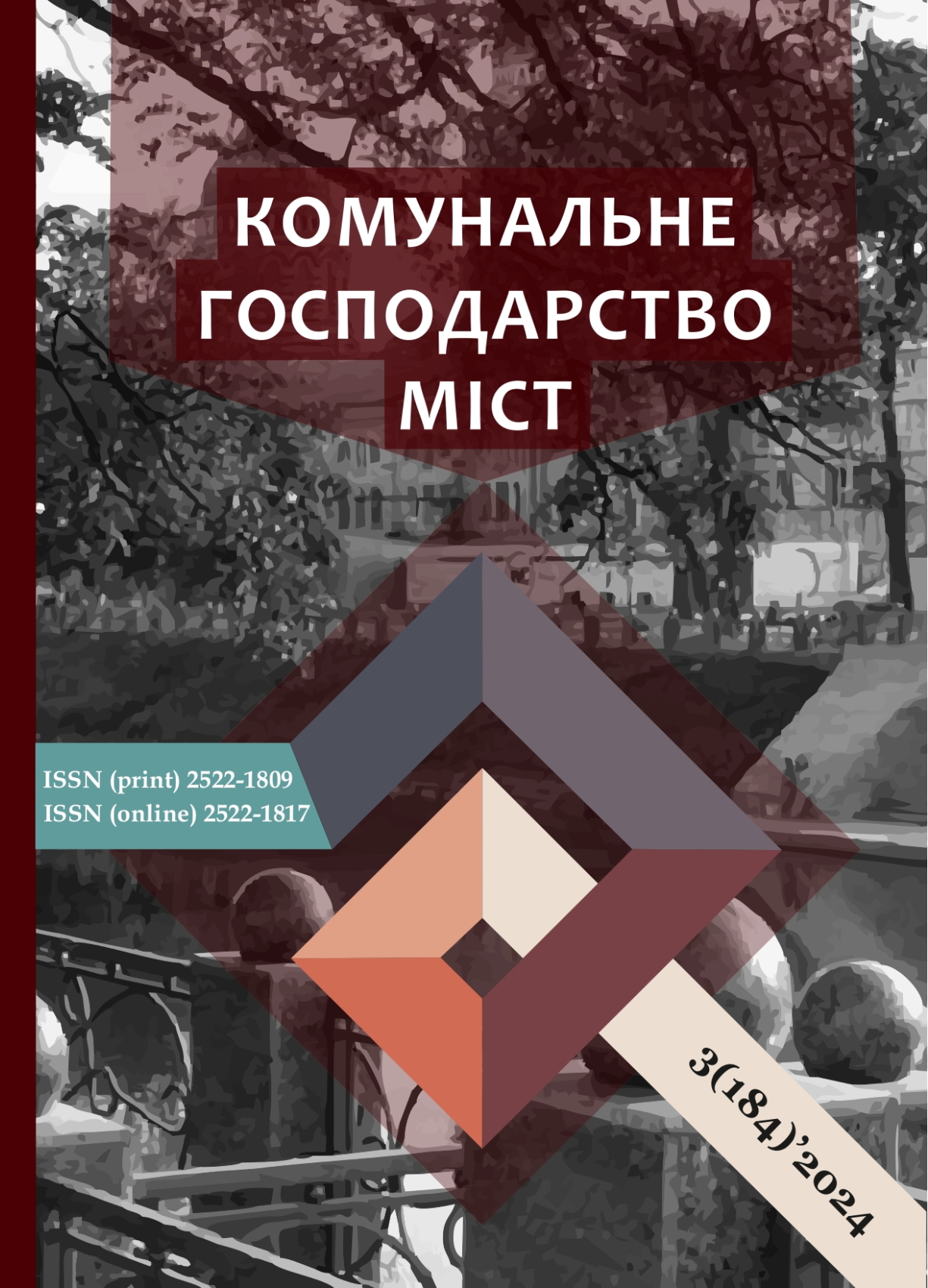USE OF GPR TECHNOLOGIES IN THE ROAD CONSTRUCTION INDUSTRY
DOI:
https://doi.org/10.33042/2522-1809-2024-3-184-107-111Keywords:
ground penetrating radar, radar image, road surface, dielectric constant, defect detection, thickness measurement, local inclusionsAbstract
The article continues the study on determining the possibility of applying ground penetrating radar (GPR) technologies in the road construction industry. The authors conduct research using an antenna unit that registers the cross-polarisation component of the reflected signal. In this case, processing the obtained radar images comes down to subtracting two mutually orthogonal components of the signal, which allows the determination of areas of the environment with anisotropic properties.
Identifying and positioning extraneous inclusions, finding communications, and determining the location of reinforcement in roadway and bridge structures are relevant tasks. Their solution lies in studying the phenomenon of wave diffraction on extraneous inclusions of the investigated environment. Metal inclusions of different diameters are distinctly visible on radar images obtained during laboratory research.
The laboratory studies conducted by the authors showed that the shape and nature of the hyperbola of the diffracted wave significantly depend on the object’s depth, diameter, and material. Therefore, further research in this direction should aim at studying the shape of the diffracted wave, which ultimately allows for judging the depth of occurrence and the diameter of a local extraneous inclusion. When finding and identifying reinforcement in structural layers of road surfaces and elements of bridges, difficulties arise due to the spacing of the reinforcing mesh. With a small reinforcing mesh spacing, when the wavelength is longer than the spacing, the reflections from the adjacent reinforcement bars merge into a common continuous boundary and make the lower layers of the structure almost indistinguishable. Solving the mentioned difficulties is possible by improving the equipment base and the algorithms for processing and interpreting the received radar images.
Completed theoretical studies and computational experiments allow us to state that the development of road surface thickness measurement and defect detection techniques will become the basis of the road surface monitoring system using the subsurface geolocation method.
References
Batrakova A.G., Urdzik S.M. Application of ground-penetrating radar technologies in the examination of road clothing. // Municipal management of cities: Technical sciences and architecture, 2023. volume 3, issue 177, p. 68-73.
Batrakova A.G. Methodology for monitoring road traffic of a non-zhorsk type due to the stoppage of georadiolocation technologies: dis. ... Dr. tech. sciences: spec. 05.22.11 / KHNADU. H., 2014. 390 p.
Josef Stryk. Road diagnostics - ground penetrating radar possibilities. Intersections Journal, 2008. Vol 5, No 1. 9 р.
Wong K.T., Urbaez E. Ground Penetrating Radar (GPR) – a Tool for Pavement Evaluation and Design. Shaping the future: Linking policy, research and outcomes: 25th ARRB Conference. Perth, Australia: Proceedings. 2012. Р. 1-13.
Li Shengli, Wang Chaoqun, Sun Panxu, Wu Guangming, Wang Dongwei. A localization method for concealed cracks in the road base based on ground penetrating radar. 2016. № 8(12). P. 1-10.
M Miskiewicz, J Lachowicz, P Tysiac, P Jaskula, K Wilde. The application of non-destructive methods in the diagnostics of the approach pavement at the bridges. IOP Conf. Series: Materials Science and Engineering. 2018. Vol. 356. 8 р.
Golovin D.V., Grekov S.V., Batrakova A.G. Algorithm for Determining the Delay of Pulse Signals Based on the Hilbert Transform // Bulletin of KhNU im. V.N. Karazina: Radio-physics and Electronics, 2009. No. 853, no. 14, p. 68-73.
Protsyuk V.O. An express method of estimating the calculated parameters of subsoil with the help of field georadar. Dissertation for obtaining the scientific degree of Candidate of Technical Sciences. Kharkiv, Khnadu, 2019. 234 p.
Jol Harry M. Ground penetrating radar, theory and applications. Amsterdam: Elsevier B.V., 2009. 508 р.
Saarenketo T., Scullion T. Road evaluation with ground penetrating radar. Journal of Applied Geophysics. 2000. Vol. 43. PP. 119-138.
Downloads
Published
How to Cite
Issue
Section
License
The authors who publish in this collection agree with the following terms:
• The authors reserve the right to authorship of their work and give the magazine the right to first publish this work under the terms of license CC BY-NC-ND 4.0 (with the Designation of Authorship - Non-Commercial - Without Derivatives 4.0 International), which allows others to freely distribute the published work with a mandatory reference to the authors of the original work and the first publication of the work in this magazine.
• Authors have the right to make independent extra-exclusive work agreements in the form in which they were published by this magazine (for example, posting work in an electronic repository of an institution or publishing as part of a monograph), provided that the link to the first publication of the work in this journal is maintained. .
• Journal policy allows and encourages the publication of manuscripts on the Internet (for example, in institutions' repositories or on personal websites), both before the publication of this manuscript and during its editorial work, as it contributes to the emergence of productive scientific discussion and positively affects the efficiency and dynamics of the citation of the published work (see The Effect of Open Access).

